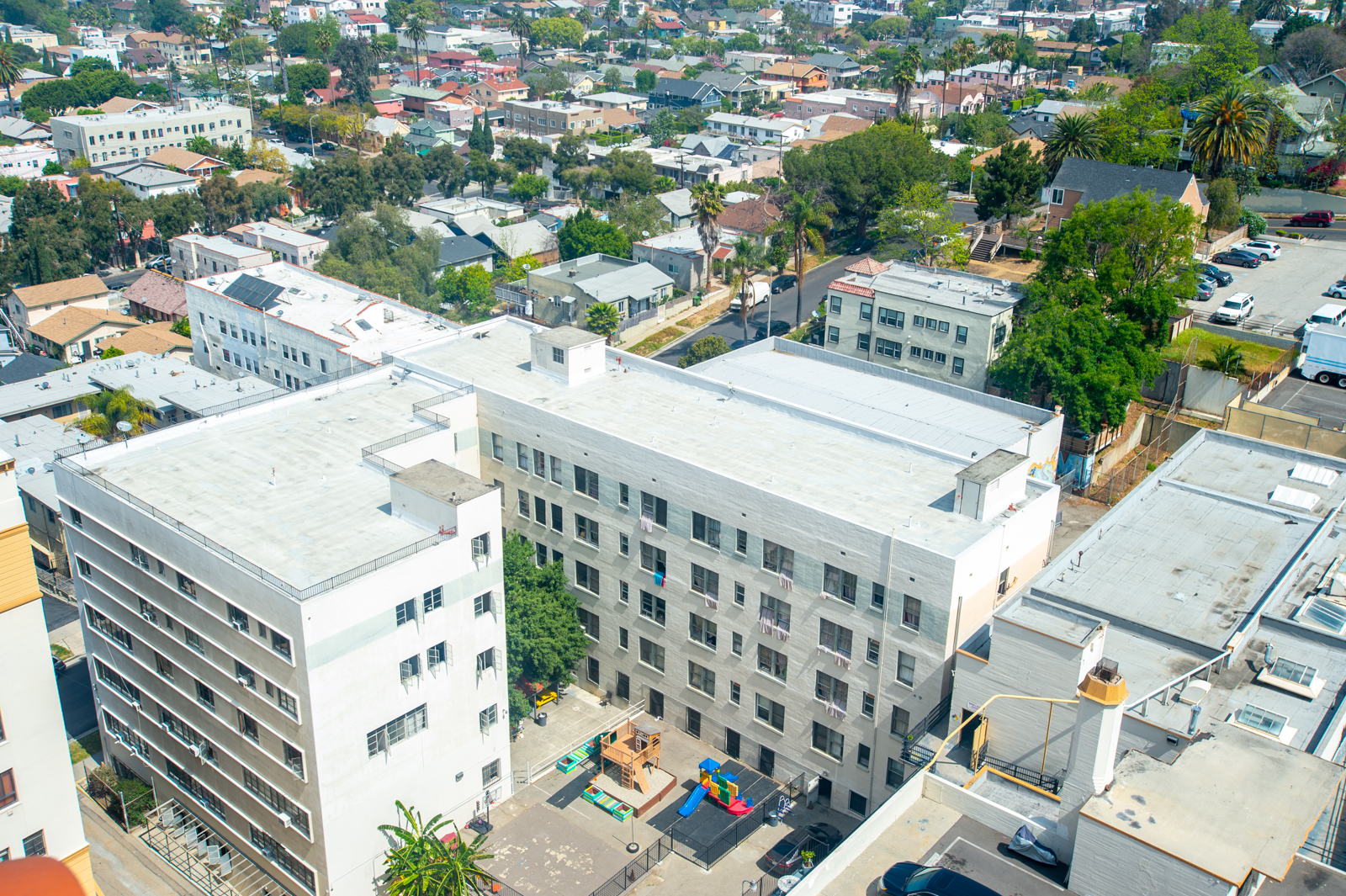Even before the pandemic, such adaptive-reuse efforts were taking place. Lately it’s become more relevant given the escalation in housing costs along with low inventory across the residential marketplace. The Los Angeles wildfires also have provided impetus for this idea.
It’s better for the environment when one doesn’t have to commute miles to work by car, leading some city planners to urge the construction of more infill development and office conversions in downtowns near transit hubs.
In December, Los Angeles city officials released a revitalization plan that’s heavy on infill development. With housing needs growing and affordability dwindling, more office-to-apartment conversions combined with mixed use – and more of it in less fire-prone areas – could help accelerate the city’s recovery.
“In general, downtowns are an easier nut to crack in terms of upzoning and eliminating parking requirements,” professor Michael E. Lewyn, director of the Institute on Land Use and Sustainable Development at Touro Law Center in Central Islip, N.Y., told the Free Cities Center. “But there are some things like market factors, higher land costs, and whether or not buildings are suitable for conversion.”
One recent report estimated 6-million square feet of “conversion-feasible” Tier 1 office space in Los Angeles’ Central Business District, as well as 11 million square feet deemed Tier 2. Jamison Properties, whose track record includes several downtown conversions, is hoping to turn the former ARCO Tower, at 1055 W. 7th Street, into nearly 700 apartments.
It’s not just Los Angeles that’s working to reconstruct potential housing opportunities. Phoenix, Dallas, and Salt Lake City are drawing more transplants to apartments as well as to single-family homes. Among the draws for developers in those states is less regulation. Lewyn questioned why an environmental review should apply to housing.
“I suspect when the state Legislature was designing these laws, they were for major polluting industries; I don’t think they would have suspected it to be used to block housing,” Lewyn added. “Now it’s just not NIMBYs (Not In My Back Yarders) – a lot of groups are used to using environmental review as a kind of blackmail.”
California’s Environmental Quality Act (CEQA), signed in 1970 by then-Gov. Ronald Reagan, was designed to assess the environmental impacts of proposed projects, but CEQA lawsuits have been used to block all kinds of public and private development, including affordable housing.
Some policymakers in Sacramento have long pushed for CEQA reform. After the January wildfires, Gov. Gavin Newsom suspended it and Coastal Commission permitting rules on affected Los Angeles communities. He recently expanded that suspension statewide for fuels-reduction projects.
Los Angeles underwent something of a Prague Spring in terms of affordable housing reform at the onset of Karen Bass’ mayoral term in 2022, but it wasn’t long before tenant groups sought to block such projects using CEQA, leading the mayor to backpedal.
Among residents who want to stay in the Palisades, Altadena and other foothill communities, questions persist about what will be done to clear overgrown vegetation and facilitate an infrastructure overhaul.
“Presumably at some point there will be homes built, but it will be five years, so where are people going to go? Let’s presume some will leave the metro area. Others will move to apartments for a while. More empty nesters could go to downtown environments,” Lewyn said. Retrofitting buildings can potentially reduce the time and expense of building from scratch.
“Generally, in the nation as a whole, there’s more demand for all types of housing everywhere except in really bad neighborhoods – because there is less housing being built now than 50 years ago and lots more people,” he added.
New housing construction starts per month peaked in the early 1970s, when the U.S. population was roughly 210 million. In December 2024, Census data shows 40 percent fewer housing starts and – at 340 million – a 62-percent growth in population. So where are all these people supposed to live?
California has passed numerous housing laws to pick up the pace of construction, but local backing is rarely assured. Especially in New York and California, Lewyn noted, environmental-review statutes can derail efficient, affordable construction projects.
Bass started off her term talking about streamlining affordable housing, and yet when there was pushback, she approved more restrictions. That was prior to last month’s wildfires, for which she again gave an executive order for rebuilding. It is unclear how much infrastructure remediation must also be done – or how long it will take to complete it.
Former San Francisco Mayor London Breed was pro-housing as is her successor, Daniel Lurie. But it’s unclear how that will translate under a new moderate majority board of supervisors. It may still be difficult to get their OK for new housing developments due to objections from constituents using the CEQA and community participation process. Still, amid the permit and review curtailing from Newsom at the state level, it could receive a more willing ear from city regulators.
Even with the state trying to nudge them, it’s an open question whether San Francisco can meet state-mandated housing targets with more office conversions. Last year the city reached a 12-year low in housing production, reported the San Francisco Chronicle. Meanwhile, 55,000 people have left the city in the past five years – often to other Sunbelt states that don’t have notorious environmental review statutes and extremely high housing costs.
“Executive branches have been wanting to push housing, but the state legislatures and city councils can be more hostile,” Lewyn added. “It may be that Gavin Newsom could pursue reform policies, but how far he’ll get isn’t clear.” Whatever the hurdles, it’s crucial for California to consider office-to-apartment conversions as one of the options.
Sarah Downey is a journalist who covers political and social policy. She’s reported for Newsweek, the Chicago Tribune, and Boston Globe in the United States and overseas.

